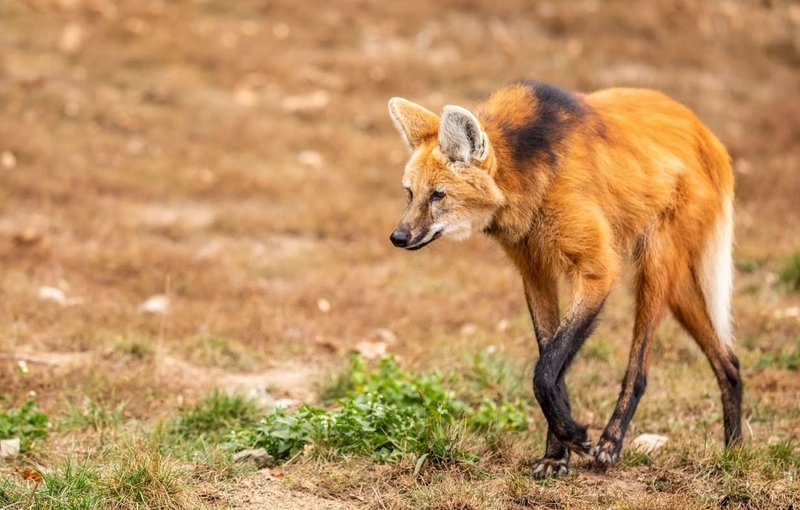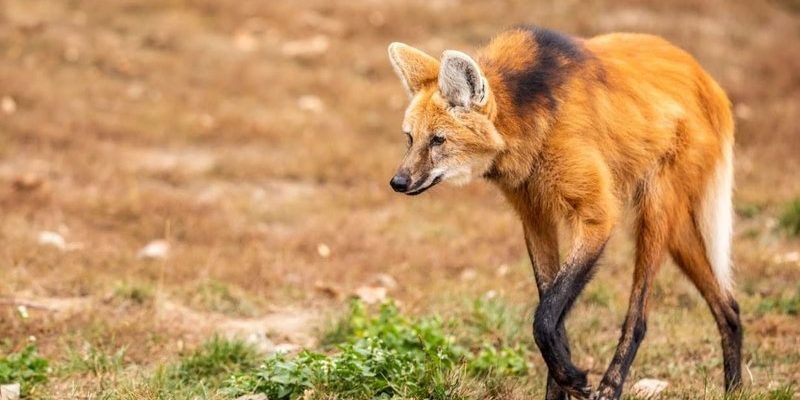
Encountering a maned wolf can be both an exciting and nerve-wracking moment. Just like meeting an unusual stranger at a café can lead to surprising conversations, meeting a maned wolf opens up a world of wonder—in this case, nature’s beauty. However, it’s essential to know how to handle the situation safely and respectfully. Let’s dive into everything you need to know when you encounter a maned wolf in the wild.
Understanding the Maned Wolf
Before we jump into what to do during an encounter, it’s helpful to understand a bit about the maned wolf itself. Native to the grasslands and savannas of South America, this creature stands out with its long legs and tall ears, giving it a unique look. It’s not a true wolf, but rather a member of its own species, which is a fascinating twist on your typical wild canid.
Maned wolves are primarily nocturnal, meaning they’re more active during the night. They have a varied diet, eating fruits, small mammals, and even insects. Think of these wolves as graceful guardians of their grassy domains; they are excellent at blending into their surroundings, thanks to their reddish-brown fur. So, when you encounter one, remember that you’re seeing a creature well-adapted to its environment and life in the wild.
When you spot a maned wolf, it’s important to remember they’re not aggressive by nature. They generally prefer to avoid confrontation. However, like any wild animal, they can feel threatened, especially if humans get too close or approach with aggressive body language.
Stay Calm and Assess the Situation
Okay, so you’ve spotted a maned wolf. First things first—stay calm. Your reaction can influence how the animal behaves. If you panic, you might make sudden movements that could startle the wolf. Instead, take a deep breath and observe from a safe distance.
Think of it like watching a live performance. You wouldn’t want to disrupt a play, right? The same goes for nature. Keep your voice low and avoid making loud noises. This helps keep both you and the wolf safe.
Assess the situation. Is the wolf aware of your presence? If it is standing still, perhaps it’s just as curious about you as you are about it. If the wolf notices you, it might sniff the air or shift its position. These are signs that it knows you’re there, but it’s also weighing its options.
Maintain a Safe Distance
One of the key things to remember when encountering any wild animal, including the maned wolf, is to respect their space. Keeping a safe distance is crucial—not just for your safety but also for the animal’s. Approaching too closely can cause the wolf to feel cornered, leading to unpredictable behavior.
A good rule of thumb? Stay at least 50 to 100 yards away. This distance allows you to enjoy this remarkable animal without becoming a threat or nuisance. You wouldn’t want someone invading your space while you’re sipping your coffee, right?
Use binoculars or a camera with a zoom lens to capture the moment instead. This way, you’ll have a lasting memory without putting yourself or the wolf at risk.
Do Not Feed or Approach the Wolf
Here’s the thing: feeding wild animals can seem tempting, especially if they come close, but it’s a big no-no. Giving food to a maned wolf not only disrupts its natural hunting instincts but can also lead to dangerous situations. Wild animals that become accustomed to human food can lose their natural wariness and may approach people more frequently.
Imagine how you’d feel if every time you visited a park, people started tossing treats your way. You might lose your ability to seek out your own meals and become too reliant on others. This can lead to conflicts, and that’s not good for anyone.
So, if the wolf hangs around, resist the urge to toss it a snack. Instead, enjoy observing it from afar. Appreciate its beauty and unique behavior.
Document Your Encounter Respectfully
If you’re lucky enough to spot a maned wolf, documenting the encounter can be a wonderful way to remember the experience. But there’s a right way to go about it.
Instead of rushing to grab your phone while moving closer, take a moment to breathe and get your settings right from your current spot. Use your smartphone or camera to snap photos, but don’t interfere with the wolf’s natural behavior.
Capture the moment without intruding—this means avoiding flashes or loud noises. Think of it as taking family photos during a reunion: you want everyone to feel comfortable and look natural.
Sharing your experience online can also help raise awareness about these amazing creatures. Just make sure to educate others about the importance of respecting wildlife, encouraging them to keep their distance as well.
Know When to Leave the Area
Sometimes, it’s best to just give the maned wolf its space and leave the area. If the wolf appears agitated, shows signs of stress, or starts to move toward you, it’s time to back off.
Recognizing body language is key here. Signs of discomfort may include a lowered head, growling, or even a raised fur. If you notice any of these signals, take it as a cue to slowly and carefully retreat from the situation.
Remember, you’re a guest in the wolf’s home. Just like you wouldn’t barge into someone’s living room, it’s essential to respect the maned wolf’s territory.
Educate Yourself and Share Your Knowledge
Finally, if you’re passionate about wildlife and nature, take the opportunity to educate yourself further about maned wolves. Understanding their habitat, diet, and behavior can deepen your appreciation for nature as a whole.
Share what you learn with friends, family, or through social media. You might inspire others to respect wildlife and take necessary precautions when exploring nature. The more we know, the better we can protect these incredible animals.
Remember, every encounter with wildlife can teach us something valuable. Whether it’s about patience, respect, or admiration for nature, take those lessons to heart. You never know what you might carry with you long after the experience is over.
As you venture into the wild, remember these guidelines. Encountering a maned wolf can be a magical experience if approached mindfully. By staying calm, keeping your distance, and documenting respectfully, you’ll not only ensure your safety but also help protect these fascinating animals for future generations. Happy exploring!

